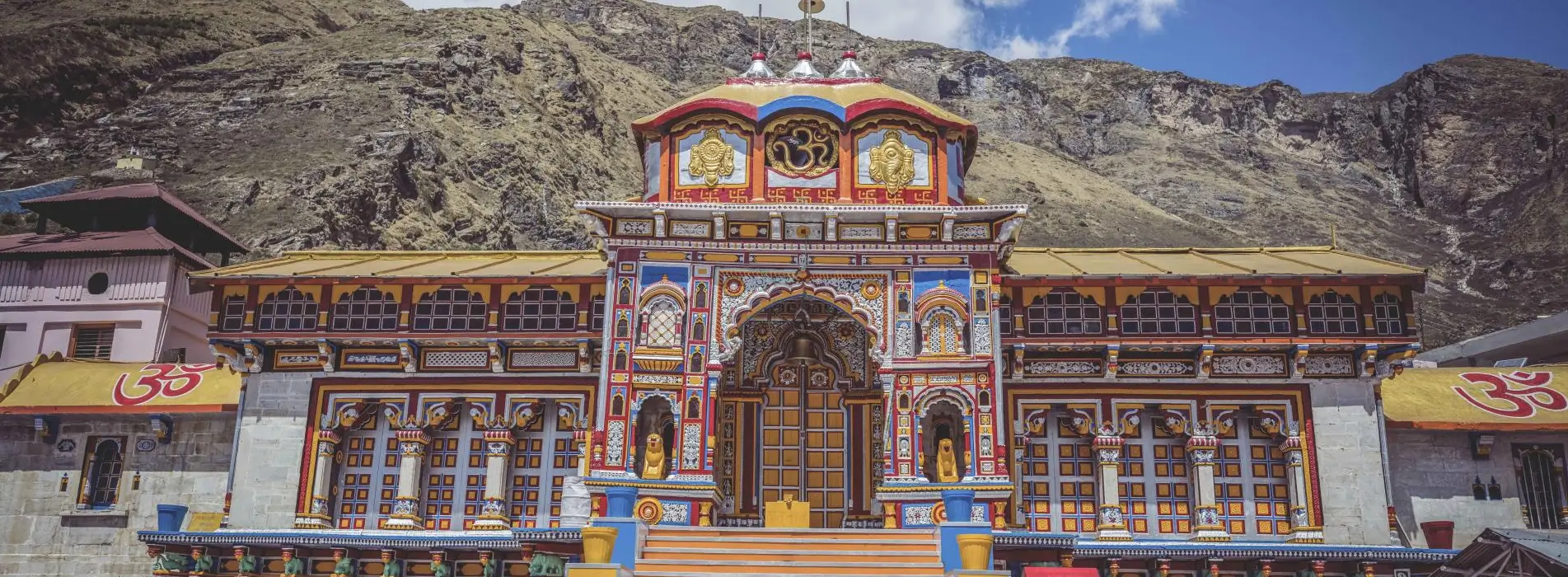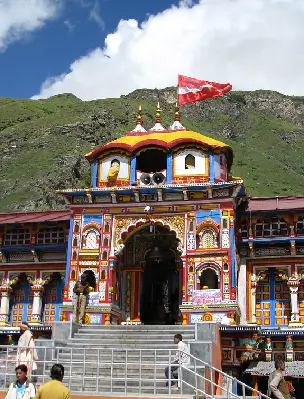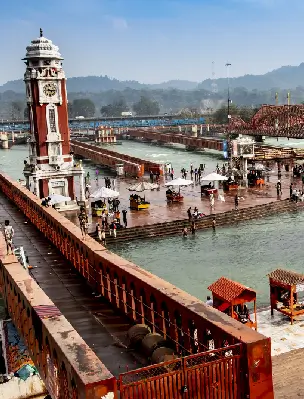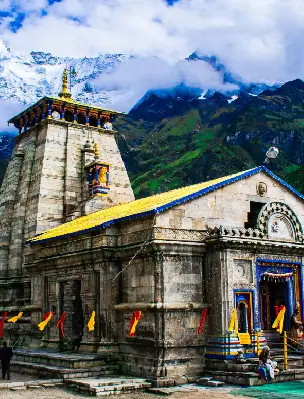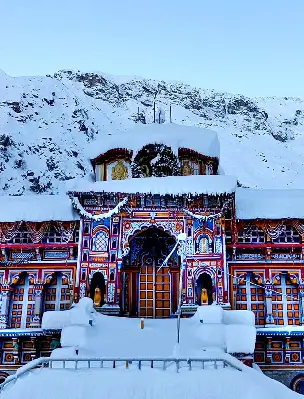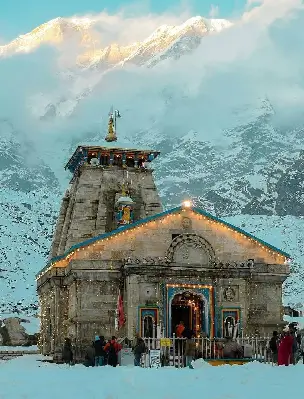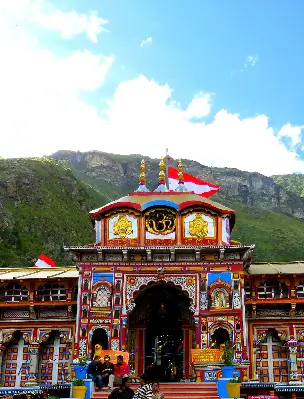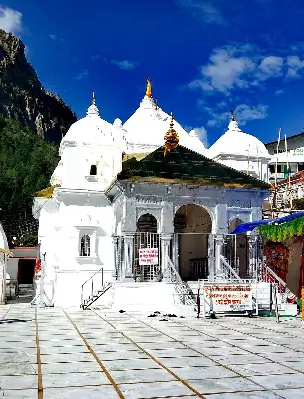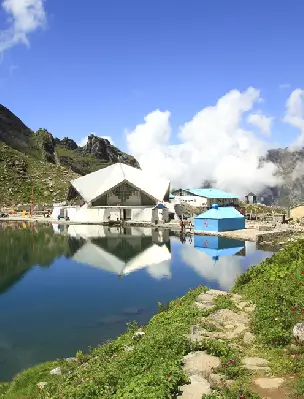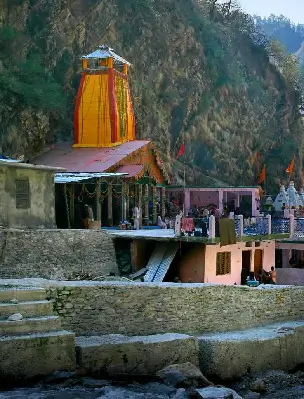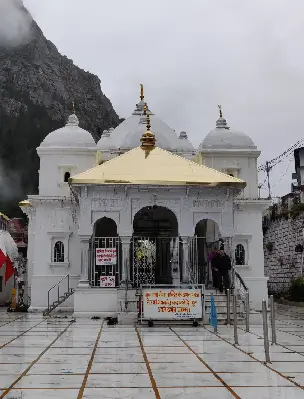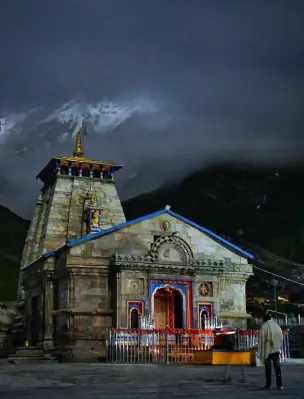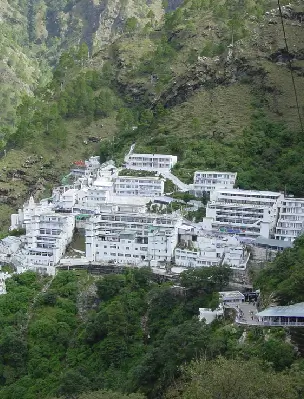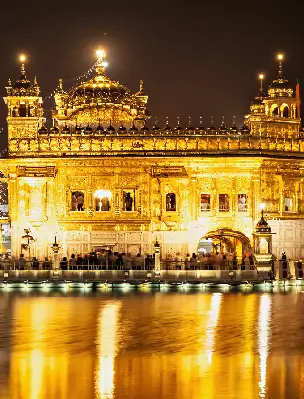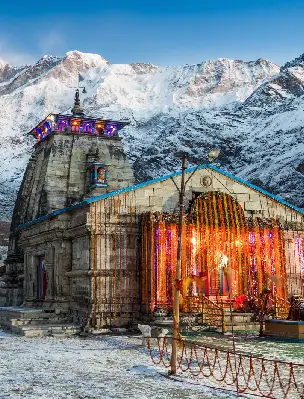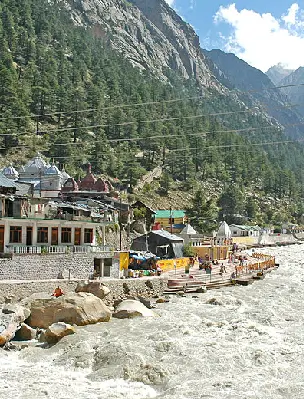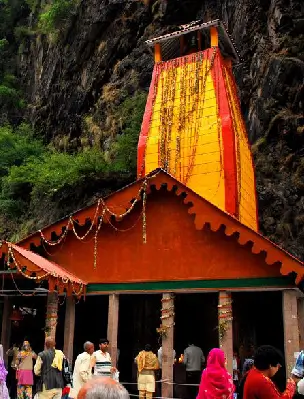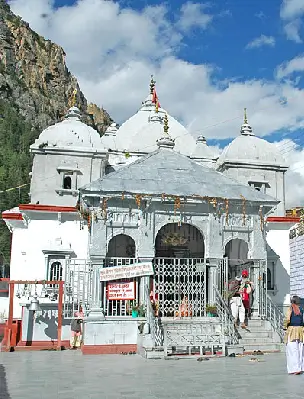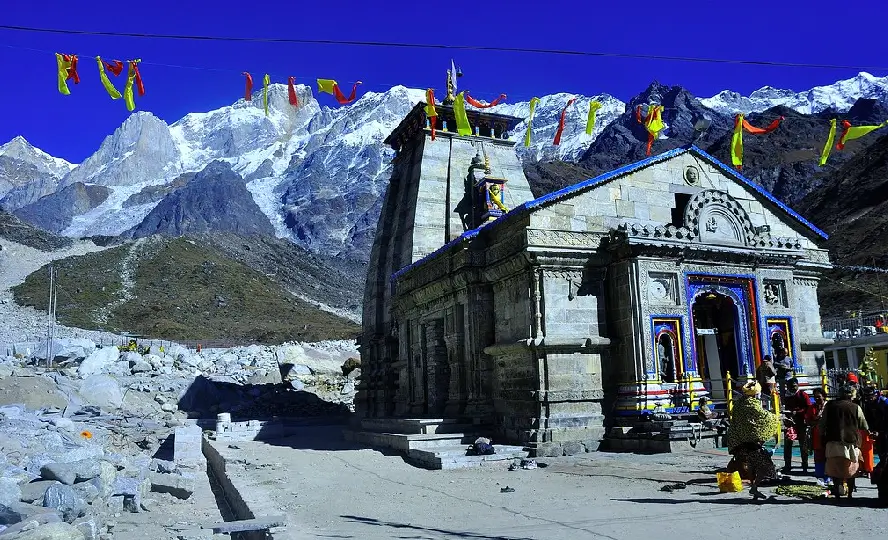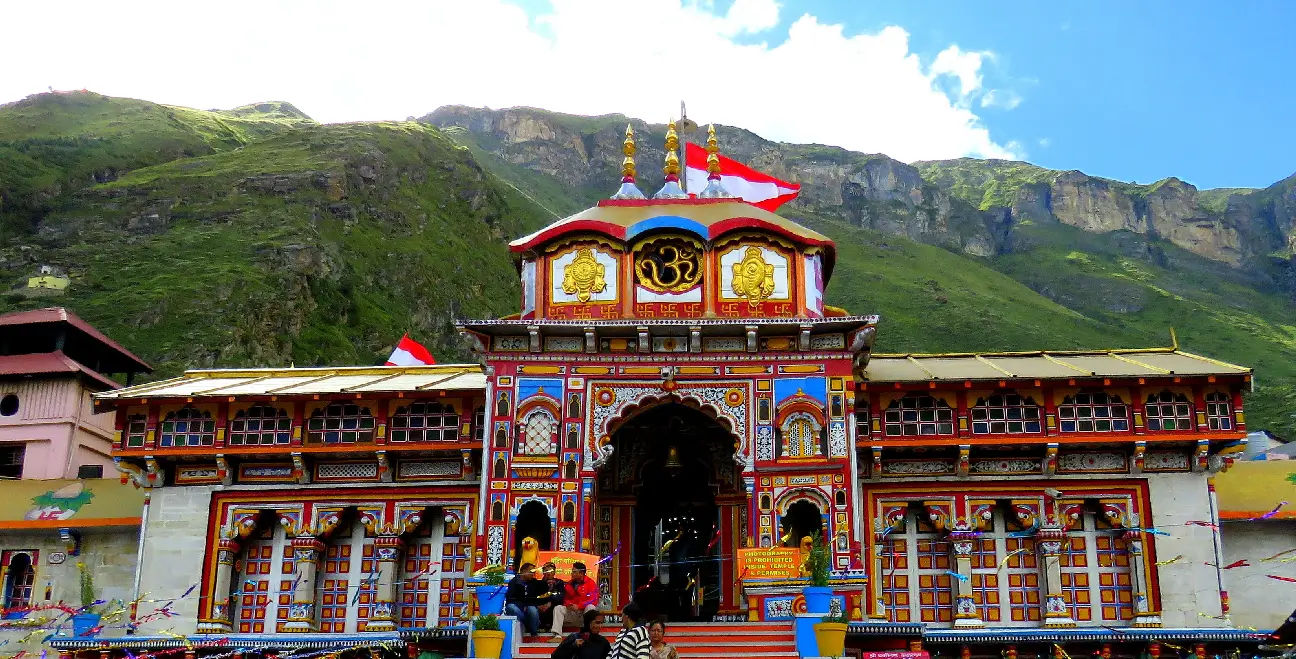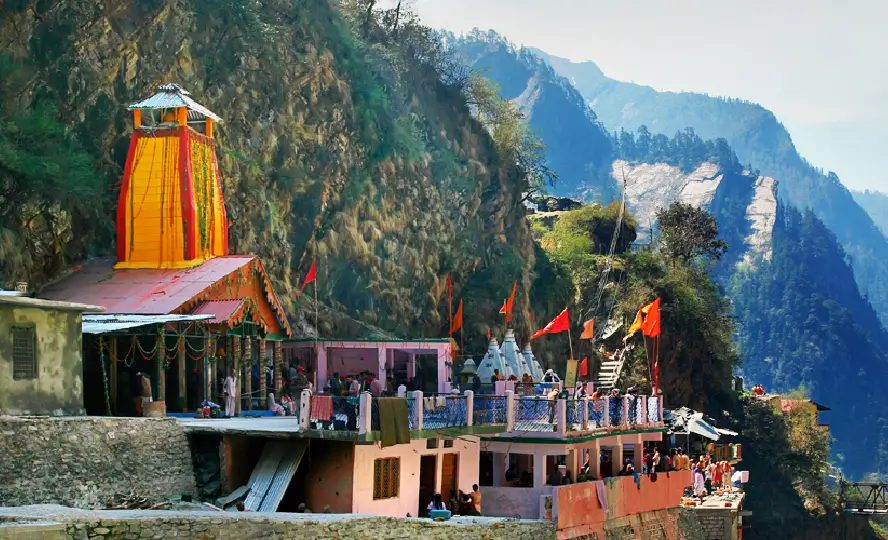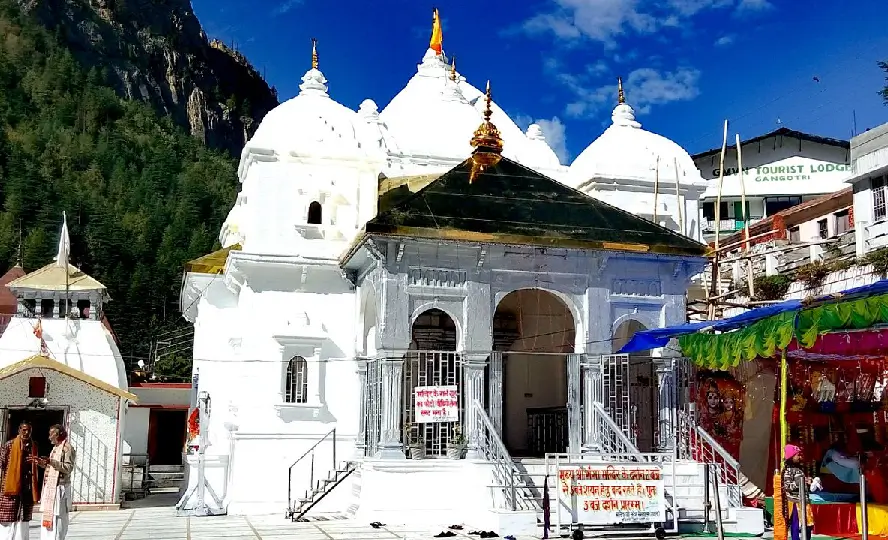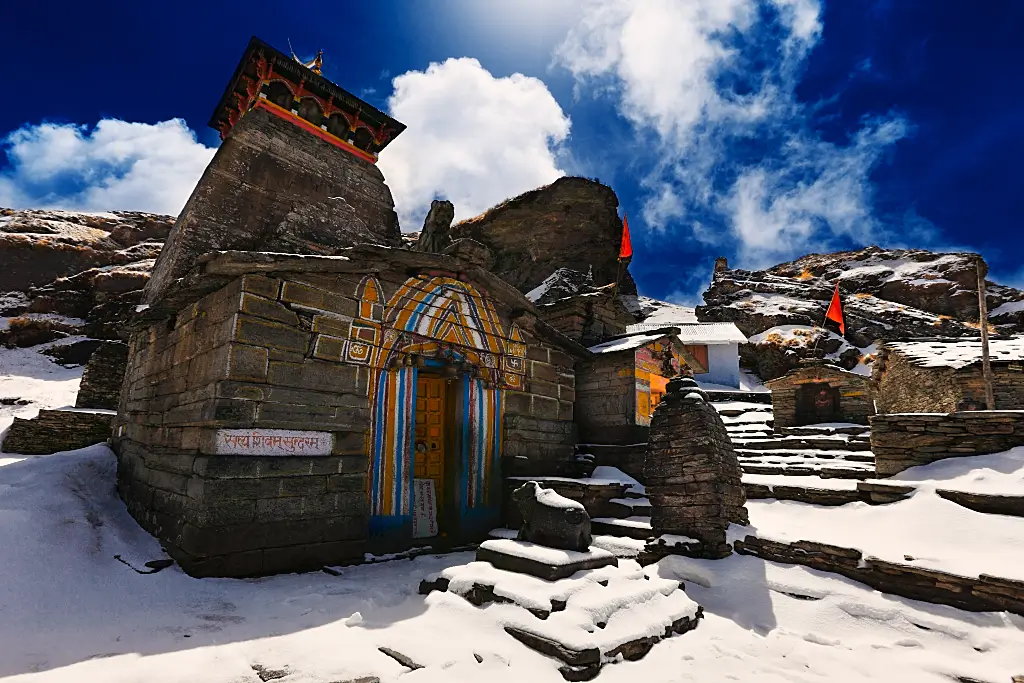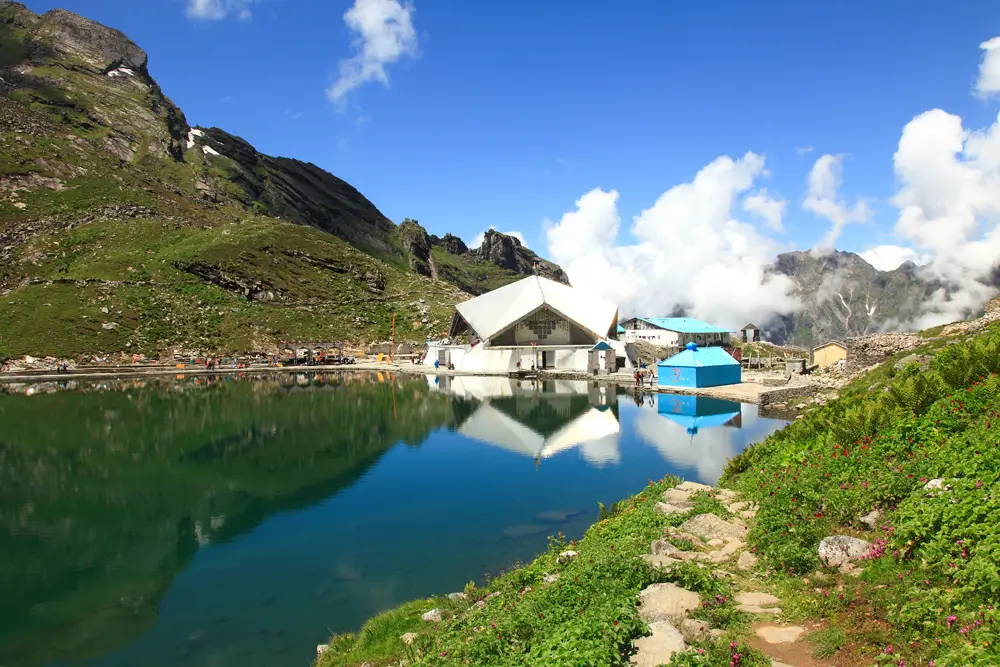Char Dham Yatra with Panch Badri Tour
- 13 Nights / 14 Days
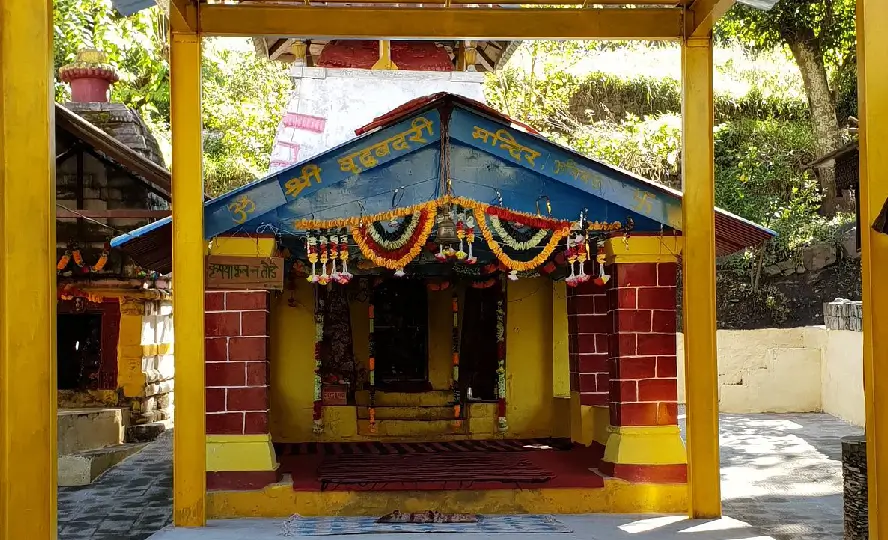
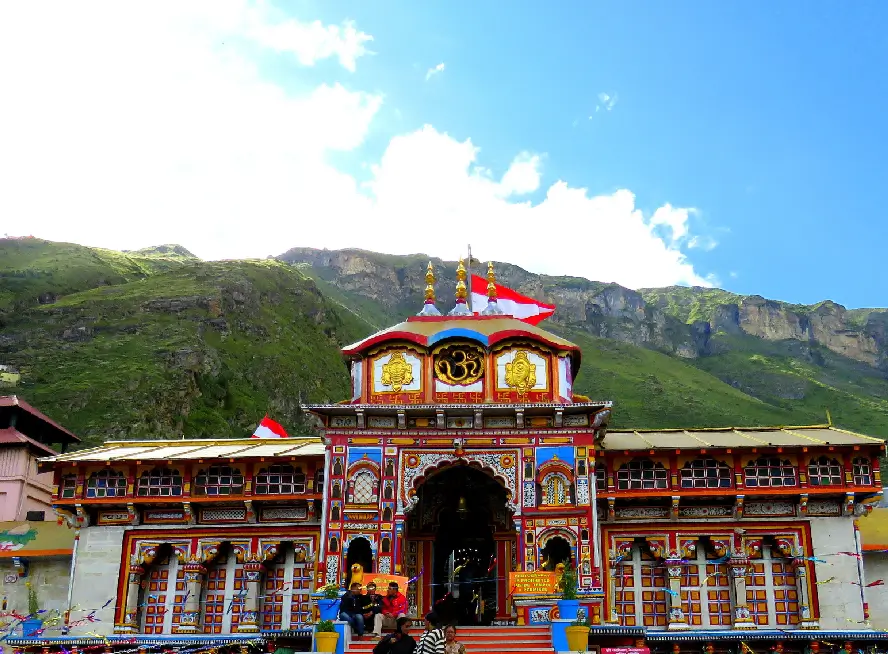
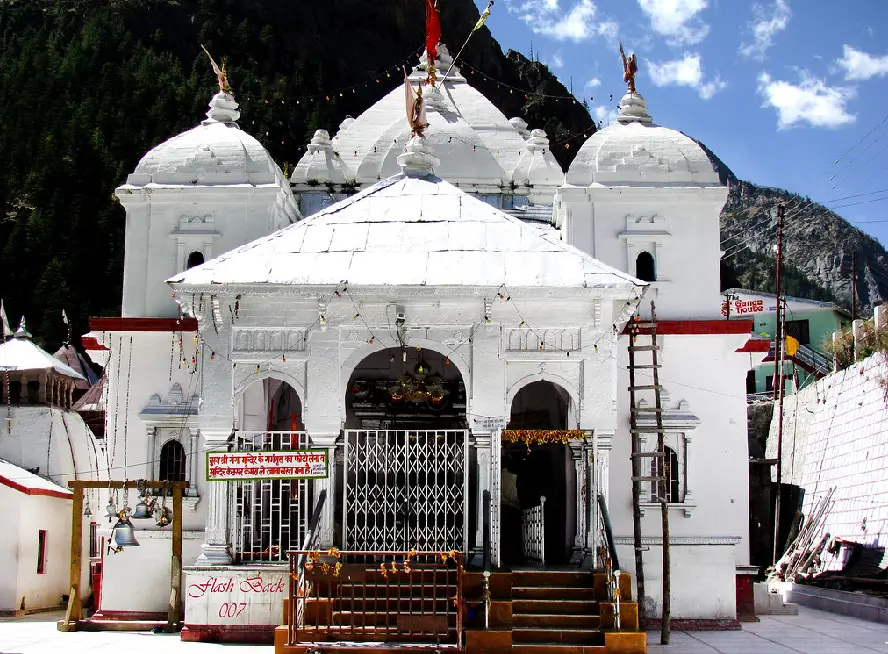
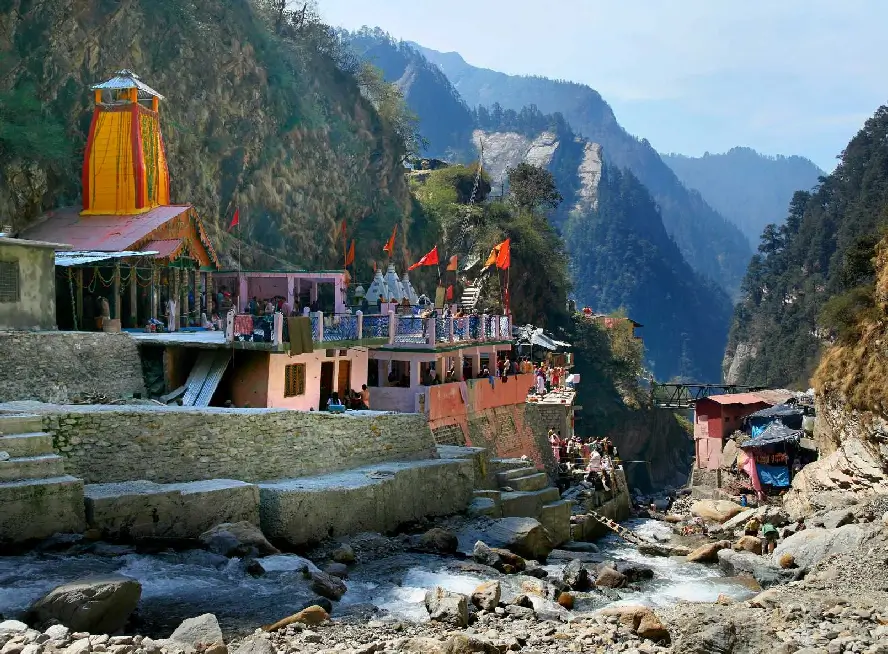
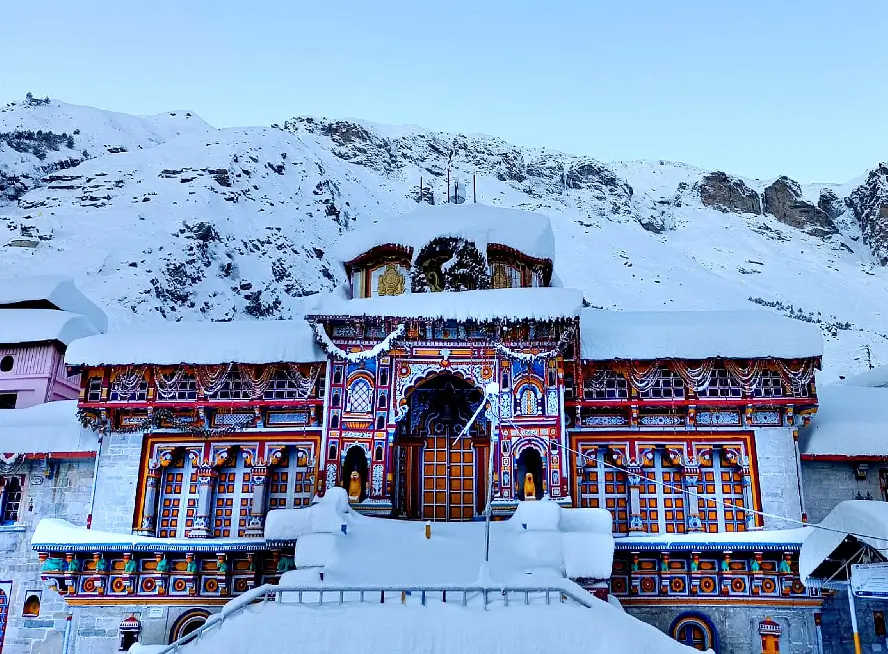
Highlights of Yatra :
Explore the pilgrimage circuits of the Chardham Temples of Kedarnath, Badrinath, Gangotri, and Yamunotri, along with the Panch Badri covering the temples of Badrinath or Vishal Badri, Yogdhyan Badri, Bhavishya Badri, Vridha Badri and Adi Badri with this tour package. Beginning from Delhi, this tour will take you through the regions of Haridwar, Barkot, Uttarkashi, Rudraprayag, Pandukeshwar, Joshimath, Srinagar, and Rishikesh. With this tour package, get a chance to visit the holy shrines dedicated to Lord Vishnu in Uttarakhand, and make your pilgrimage tour to the state, an even blessed one. During the tour, accommodations and necessary travel arrangements will be taken care of to ensure a smooth and comfortable yatra experience.
Highlights of the tour :
- Yogdhyan Badri Temple
- Bhavishya Badri Temple
- Vridha Badri Temple
- Adi Badri Temple
- Aarti at Har Ki Pauri
- Mansa Devi Temple
- Kempty Falls
- Prakateshwar Caves
- Kashi Vishwanath Temple
- Shakti Temple
- Shri Narsingh Temple
- Adi Shankaracharya Samadhi
- Vyas Gufa
- Ganesh Gufa
- Bheem Pul
- Views of Bandarpunch Peak
Itinerary:
Arrival Delhi - Haridwar (205 Kms. 06 hrs)
Upon arrival at Delhi Airport or railway station meet to our representative “Welcome” and drive to Haridwar. On arrival at Haridwar check-in at hotel. Evening Aarti at Har Ki Peri. Overnight stay at hotel.
- Haridwar : Haridwar, lying at the feet of Shiva's hills, i.e., Shivaliks, in the Haridwar district of Uttaranchal Pradesh, is a doorway. Suryavanshi prince Bhagirath performed penance here to salvage the souls of his ancestors who had perished due to the curse of sage Kapila. The penance was answered and the river Ganga trickled forth forms Lord Shiva's locks and its bountiful water revived the sixty thousand sons of king Sagara. In the traditional of Bhagirath, devout Hindus stand in the sacred waters here, praying for salvation of their departed elder. It is doorway to the sources of the Ganga and the Yamuna, 3000 to 4500 meters up into the snowy ranges of the central Himalayas. The 'Aarti' worship of the Ganga after sunset and the floating 'dia' (lamp) is a moving ritual.
Haridwar - Barkot (215 Kms. 07 hrs)
Morning drive to Barkot via Dehradun, Mussoorie, and en-route visit Kempty fall. Later continue drive to Barkot. On arrival Barkot Check In at Hotel. Overnight stay at hotel.
Barkot - Yamunotri - Barkot (42 Kms Drive / 6 Kms trek)
Morning leave for Janki Chatti via Hanuman Chatti & Fool Chatti. On arrival Janki Chatti start Trek of 06 kms for Yamunotri, On Arrive Yamunotri Holi Dip in Garam Kund, than Pooja and Darshan of Shree Yamunotri Ji, after Darshan and Pooja, afternoon start trek back to Janki Chatti on arrival Janki Chatti meet with driver and drive back to Barkot. Overnight stay at Hotel.
- Hanuman Chatti : The confluence of Hanuman Ganga & Yamuna River.
- Yamunotri Temple : Maharani Gularia of Jaipur built the temple in the 19th Century. It was destroyed twice in the present century and rebuilt again.
- Surya Kund : There are a Number of thermal springs in the vicinity of the temple, which flows into numerous pools. The most important of these is Surya Kund.
- Divya Shila : A rock pillar, worshipped before entering the Yamunotri Temple.
Barkot - Uttarkashi (Drive 82 Kms, 04 hrs)
Morning leave for Uttarkashi, a drive of 82 kms. Enroute vist Prakateshwar Cave, on arrival Uttarkashi check in at the hotel evening visit Vishwnath Temple, Overnight stay at the hotel.
- Uttarkashi : Situated at the bank of river Bhagirathi. The temple of Lord Vishwanath is located here where a massive iron trident is erected. The other important temples situated here are Ekadash Rudra, Bhairav, Gyaneshwar and Goddess Kuteti Devi.
Uttarkashi - Gangotri - Uttarkashi (100 Kms. per way)
Early morning drive to Gangotri and on arrival take a holy dip in the sacred river Ganges, also called Bhagirathi at its origin. Perform Pooja after that and relax for some time in the lovely surroundings, afternoon drive to Uttarkashi, on arrival check into the Hotel.
Uttarkashi - Srinagar - Rudraprayag (188 Ksm . Drive 09 - 10 Hrs. Drive)
Morning drive to Rudarparyag , en-route visit Tehri Dam & continue journey toward Rudarpryag. Upon arrival in check-in at hotel. Later in the evening visit Koteshwar templ.over night stay at the hotel.
- Rudraprayag : It is the confluence of river Mandakini and river Alaknanda.
- Temples : Rudranath and Chamunda Devi, Koteshwar Temple (3 Kms).
Guptakashi - Kedarnath (32 Kms Drive, 14 Kms. trek)
Morning drive to Gaurikund (32 kms drive-one way). On arrival Gaurikund start your journey on the tough Trek ahead. Stop for lunch en route at Rambara, and continue after that to arrive by late afternoon, on arrival check in to the Hotel / Guest Houses. After freshening up, perform Pooja and also Darshan at Shri Kedarnathji. In the evening also visit Adi Shankaracharya Samadhi behind the Temple. Overnight stay at the Hotel or Guest Houses.
- Kedarnath : is a majestic sight, standing in the middle of a wide plateau surrounded by lofty snow covered peaks. The present temple, built in the 8th century by Adi Shankaracharya, stands adjacent to the site of an earlier temple built by the Pandavas. The inner walls of the assembly hall are decorated with figures of various deities and scenes from mythology. Outside the temple door a large statue of the Nandi Bull stands as guard.
Kedarnath - Rudraprayag (14 KMS TREK 70 KMS DRIVE)
Early Morning Pooja & Darshan at the Temple. Later drive to Rudrapryag, via Guptkashi , on arrival check in at the Hotel for Overnight stay.
- Rudraprayag : It is the confluence of river Mandakini and river Alaknanda.
- Temples : Rudranath and Chamunda Devi, Koteshwar Temple (3 Kms).
Rudarprayag - Badrinath (157 KMS)
Morning leave for Shri Badrinath Ji. Enroute visit Narsingh Temple, and Adi Sankracharya Samadhi at Joshimath, than drive to Badrinath On arrival take the holy Darshan and spend time visiting Mana village the last village before the Tibetan border, Byas Gufa, Bheem Pul, Saraswati River, Overnight stay at hotel.
- Tapt Kund : Natural thermal springs on the bank of the river Alaknanda, where it is customary to bathe before entering the Badrinath temple.
- Narad Kund : A recess in the river, near Tapt Kund, forming a pool from where the Badrinath idol was recovered.
- Mata Murty Temple : Devoted to the mother of Sri Badrinathji. Other important temples include Sesh Netra Temple, Urvashi Temple and Charanpaduka.
- Mana Village : Inhabited by an Indo-Mongolian tribe, it is the last Indian village before Tibet.
- Bhim Pul : On the other side of Mana village, a massive rock forming a natural bridge lies over the roaring Saraswati River. It presents a spectacular view of water thundering down through the narrow passage under the rock and is believed to have been placed there by Bhim, the second eldest among the five Pandava brothers.
- Vyas Gufa (cave) : Near Mana Village, this is a rock-cave where Ved Vyas is believed to have composed the Mahabharata and the pauranic commentaries.
Badrinath - Pandukeshwar - Yogdhyan Badri - Joshimath
After Darshan drive to Joshimath en-route visit Yogdhan Badri Overnight at hotel in Joshimath.
- Yogdhyan Badri : Every so often in the Garhwal Himalayan, tales from the Mahabharatha spring magically to life. Yogdhyan Badri, 1,920 mts. is located at Pandkeshawar, named after the Pandavas King. It is said that the Pandavas, victorious after their battle against the Kauravas, but emotionally scarred, came to the himalaya. And it was here that they handed over their capital, Hastinapur, to Raja Prikshit and took up penance before seeking out the highway to heaven. The importance of the badri is immence and the sanctum has an image of the lord in a meditative postures."
Joshimath - Syaldhar - Bhavishya Badri - Joshimath.
Morning drive to Syaldhar and 6 Kms trek starts for Bhavishya Badri . Evening visit to Narsing temple and shankracharya temple in Joshimath. Overnight at hotel in Joshimath.
- Bhavishya Badri : The Futute Badri is located at 2,744 mts. amidst the thick forests surrounding Tapovan. According to a divination, it is here that all devotees will throng once Badrinath is no more. While there can be no conceivable reason why this should happen, scientists agree that Joshimath, the entry point into the area before the final, most strenuous climb, is sited on an ancient landslide and has been sinking, and with a barrage coming up close by, may actually see the fulfillment of the divine prophecy. But whatever happens, Bhavishya Badri is popular even now. Enshrined here is the lion headed image of Narsingh. Visitors pass the serene the Tapovan a place known for its hot water springs en route to the banks of the Dhauliganga, and on to shrine.
Joshimath - Virdha Badri - Adi Badri - Karanprayag.
Morning Visit Virdha Badri than drive to Adibadri via Karanprayag on arrival after Pooja & Darshan Drive Back to Karanprayag, overnight stay at Karanprayag .
- Virdha Badri : Before Badrinath was designated one of the four Char Dhams of Hindu worship by Adi Shankaracharya, the idol of Badrinah carved by divine Vishwakarma was enshrined and worshipped here. It is said that when mankind entered the age of Kali, Vishnu chose to remove himself from the temple. Interestingly the image was found by Adi Shankaracharya at NaradKund, and restored, through part of it remains damaged. This, the first Badri, is located at the height of 1,380 mts. at Animath. While Badrinath closes during winter, the idol and priests hibernating at Joshimath, Virdha Badri remains opens throughout the years. "
- Adi Badri : Another pilgrimage centre of local importance is this group of 16 temples en route to Ranikhet and closes to the confluences at Karan Prayag. The main temple is dedicated to Narayan and has a raised platform in the pyramidal form. Within the temple, a black stone idolis installed. It is believed that thease temples, dating to the Gupta age , was sanctioned by Adi Sankaracharya who wanted to spread the tenents of Hinduism to every remote corner of the country.
Karanprayag - Rishikesh (170 Ksm 8 Hrs)
Morning drive to Rishikesh via Rudarpryag & Srinagar Garhwal. En-route visits the Confluence of Bhagirathi and Alaknada River which is called Devprayag. Than continue drive towards Rishikesh. On arrival check in at hotel. Overnight stay at hotel.
Rishikesh: 24 Kms. from Hardwar. Located in the laps of lower Himalayas, and is surrounded by scenic beauty of the hills on three sides with Holy Ganga flowing through it. The whole place is considered to be sacred as it is believed that meditation at this place leads to attainment of salvation. There are many temples-some ancient, some new along the river Ganges. Rishikesh is important not only as pilgrimage centre closely associated with the Ramayana, but also as home for many important centres of Hindu religious thought and spirituality, and as a very great Yoga Centre. There are a great many ashrams and Yoga institutes here. Rishikesh is also the gateway and the start-off point for journeys to important religious places like Badrinath, Kedarnath, Gangotri, and Yamunotri.
Rishikesh - Delhi (234 KM)
Morning drive to Delhi. On arrival in Delhi, transfer to the onward connections.
